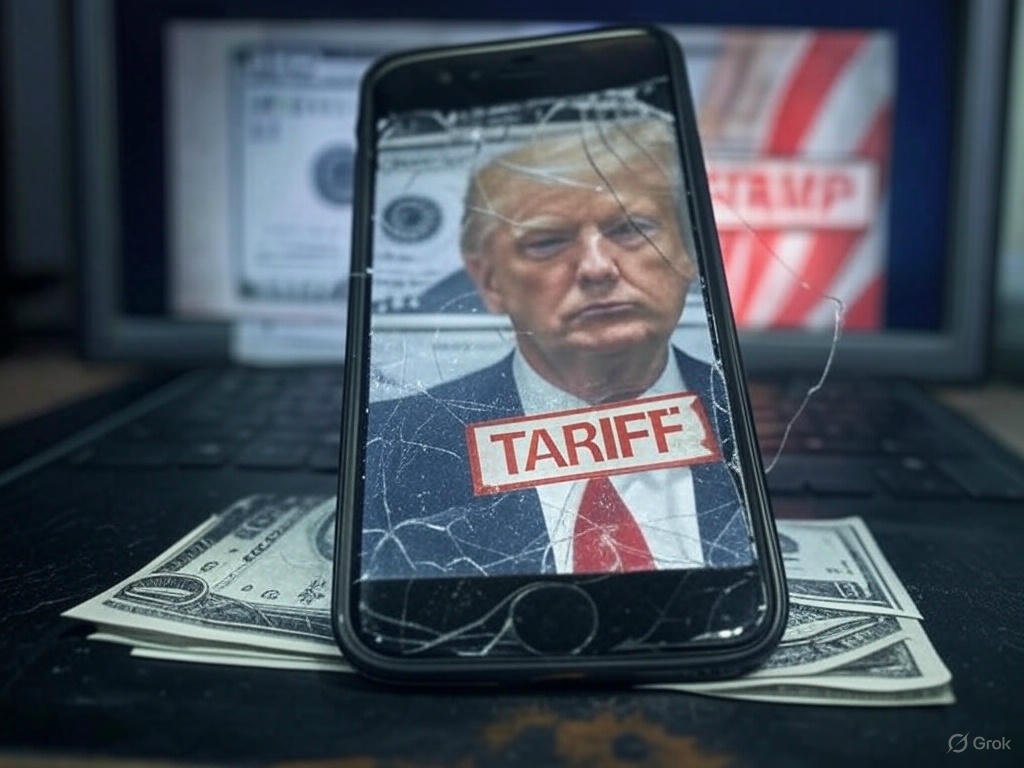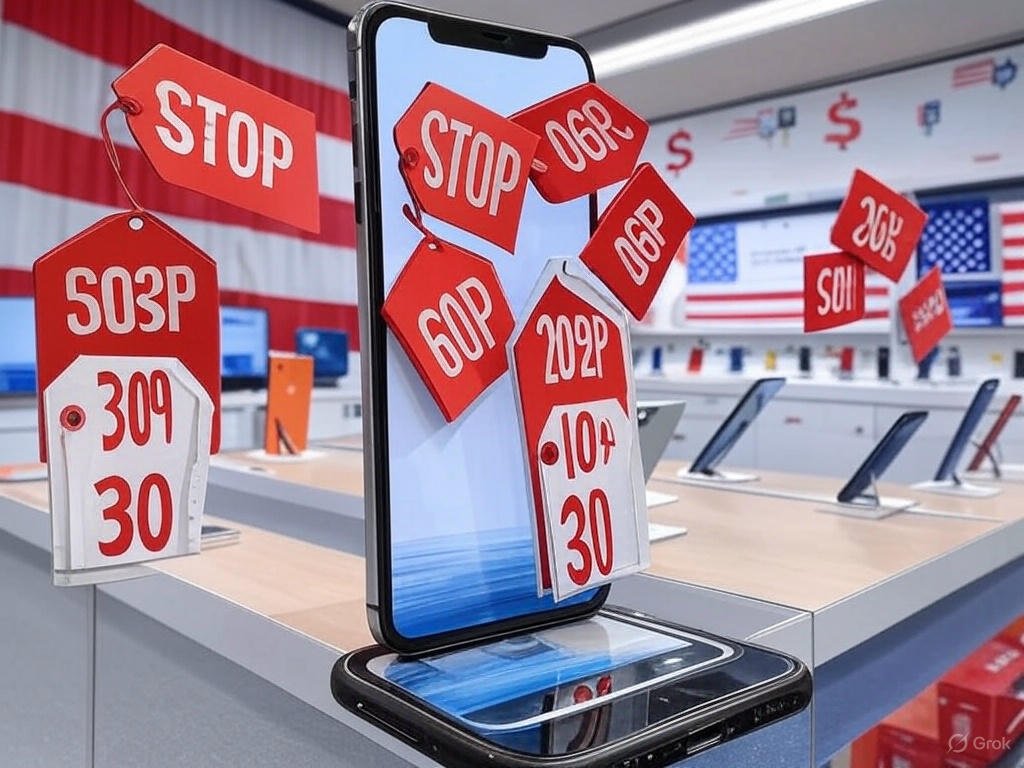
How Trump’s Tariff Plan Could Raise Your Next Smartphone Bill
Why Your Next iPhone or Android Could Cost More
Imagine this: you’re standing in a phone store, looking at the newest iPhone or Galaxy phone. You’re ready to purchase it, only to be shocked by the price; it’s much more than you anticipated. Why? Tariffs, in one word.
The Trump administration has threatened to impose new taxes on Chinese imports. That might sound like something only economists have to worry about, but it could reach your wallet if you‘re planning on buying a new smartphone anytime soon.
In this piece, we‘ll let you know what these suggested tariffs are, how they affect you, and what Apple, Samsung, and Google are doing and saying about them.
What Are Tariffs, Anyway?
A tariff is a charge for products that originate elsewhere. Governments implement tariffs so that foreign-made products will cost more, and the hope is that people will then use their money to purchase products that were made domestically. The Trump administration’s tariffs mainly focused on products manufactured in China. This varied from electronics to everyday items. Former U.S. President Donald Trump is now saying that he is likely to increase tariffs once again if re-elected, and smartphones could be affected.
Why This Matters to You
You may be wondering, “I don’t buy directly from China, so why should I care?”
Here’s the catch: many of the world’s top smartphones, including those from Apple, Samsung, and Google, are either assembled in China or rely on components made there. So if tariffs rise, the cost to bring these phones into the U.S. goes up. And who foots that bill in the end? You guessed it—the consumer.
Apple, Samsung, and Google: What’s at Stake?
Let’s take a closer look at how the big players in tech are being affected.
- Apple: Apple assembles most of its iPhones in China. The company has been working to shift some of its production to countries like India and Vietnam, but that’s a slow and expensive process. Higher tariffs could push the price of iPhones even higher or lower Apple’s profit margins. That’s a tough choice to make during a competitive tech race.
- Samsung: Samsung manufactures most of its devices in Vietnam, which could cushion the impact of U.S.-China tariffs. However, some components still come from China, so they’re not completely in the clear.
- Google: Google also relies on Chinese factories, especially for its Pixel smartphones. Like Apple, they’ve started diversifying their supply chain, but any transition takes time.
Could Prices Actually Go Up?
Short answer? Yes.
If tariffs are placed on consumer tech, it’s a good bet that smartphones are going to cost more. For example, if it’s 10% to 25% more expensive to import parts, manufacturers might either transfer that cost to you or cut back on features to maintain current prices. We‘ve already seen the inflation that’s driven the average cost of smartphones higher. According to Counterpoint Research, the cost of smartphones globally increased over 10% in recent years. New tariffs on top of this? It‘s clear why your next upgrade is more of a luxury buy than ever.
What Can Smartphone Makers Do?
Companies like Apple and Google are not being inactive. They are working to prevent these sudden price increases by shifting production away from China. This is called reshoring or changing where they get their supplies from.
Yet there is no easy fix. Building new plants, retooling workers, and establishing new supply chains all require time and investment that is to say that the effects of tariffs can still be felt in the short term. Other companies might also redesign their phones to include fewer components made in China. It sounds simple, but when you‘re working with complicated technology, even a minor change can take months or years to make.
What Does This Mean for Everyday Buyers?
It boils down to this: brace for higher prices or fewer features, especially in newer phone models.
Here’s a handy breakdown of how this could affect you:
- Higher Launch Prices: New models of iPhones, Galaxy phones, and Pixel devices could cost $50–$150 more.
- Fewer Deals: Retailers may pull back on discounts to make up for higher import costs.
- Longer Product Lifecycles: People may start holding onto their phones longer, slowing down tech innovation.
Are There Any Silver Linings?
Some experts believe tariffs could encourage more tech manufacturing in the U.S. in the long term. That could mean more jobs, shorter supply chains, and less reliance on overseas production. But again, that’s a long game, and the short-term pain could still sting consumers’ wallets.

How to Prepare for a Possible Price Hike
You can’t control global trade policy, but you can plan ahead. Here’s how:
- Buy Older Generations: Consider picking up last year’s model. Often, the difference in performance is minimal, but the savings are real.
- Trade-Ins & Deals: Use trade-in programs from Apple, Samsung, or your carrier to offset costs.
- Keep an Eye on Supply Chain News: Knowing what’s happening behind the scenes can help you time your purchase wisely.
Also, check out our tips on how to pick the right smartphone for your budget and learn how to extend the life of your current phone.
Final Thoughts: Will Tariffs Shape Your Smartphone Future?
The bottom line: if tariffs come back into play, smartphone prices could climb. So whether you’re team iPhone or #TeamAndroid, expect your next device to possibly come at a premium. And while tech giants like Apple and Google are doing their best to shield us from the effects, the tug-of-war between politics and pricing isn’t going away anytime soon.
Have you noticed rising smartphone prices lately? Or are you planning to wait out the market before upgrading? Let us know in the comments!
And while you’re here, don’t miss our recent piece on top Android alternatives in 2024, perfect for budget-conscious folks looking to stay connected without breaking the bank.
As global trade tensions continue, staying informed helps you make smarter tech decisions. Stay updated with us for more tech news and buying guides.

